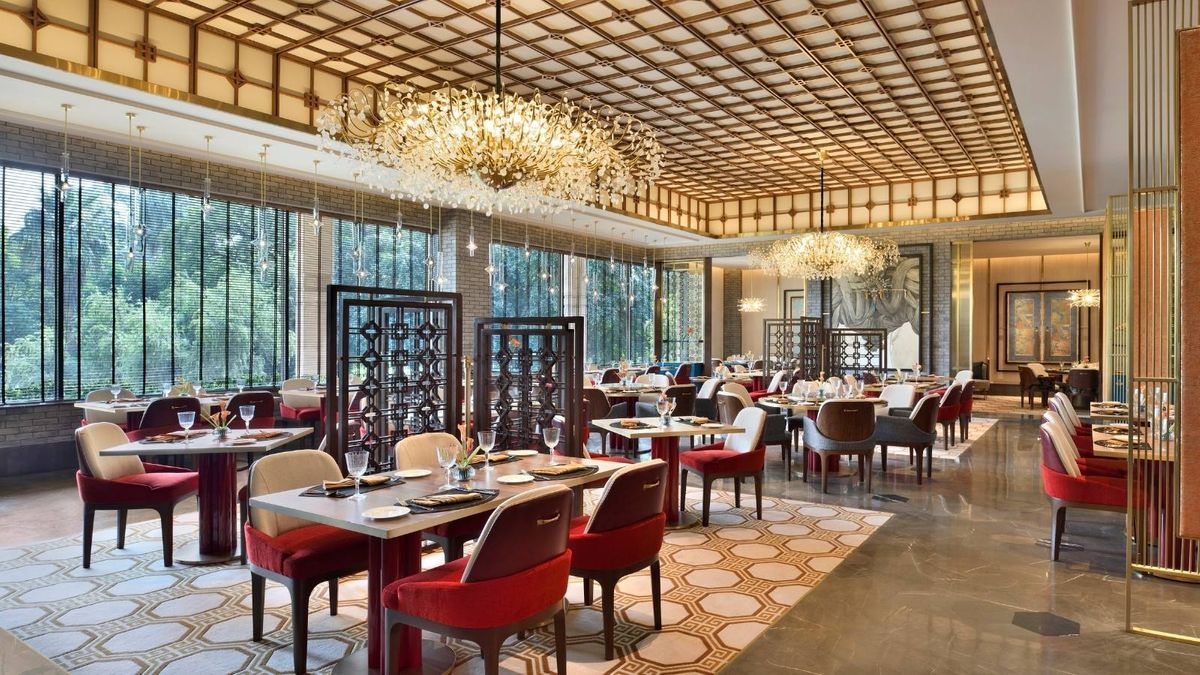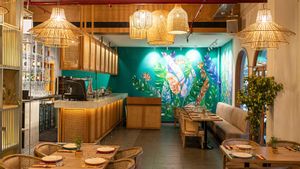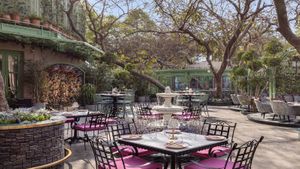House of Ming was conceptualised with the inauguration of the Taj Mahal New Delhi in 1978, and for over four decades, it has been the preferred restaurant of many Delhiites for elaborate family meals to cosy date nights. The place has hosted high-profile corporate lunches and downtime for bureaucrats, or those who simply come down for delicious Chinese food and the inimitable service of Taj Hotels. In short, this restaurant has been a defining part of the city’s culinary landscape for decades. During these 40 years of successful operation, this is the third major refurbishment that the restaurant has seen.
The legend
House of Ming highlights the golden era of the Ming Dynasty. The restaurant is conceptualised around the story of a young Ming empress and a young Indian painter who caught a glimpse of this mysterious empress in the marketplace but never got the chance to have a look at her face. He was captivated by her beautifully tied hair – a bun decorated with the most intricate and enchanting pins. This obsession of the young painter led to a painting that the artist called 'Princess of Ming’. Over time, the painting was stolen multiple times for its beauty, until it was lost in the sands of time only to be found by another young painter in a place called House of Ming. She was back home with a renewed perspective. The House of Ming thus became a celebration of unrequited love.
The new look

What we loved most about the new look is that although the restaurant has a distinctive Chinese aesthetic, it has been redesigned in a contemporary style. To begin with, the teal and gold doors that welcome you into the restaurant are mammoth and the spacious reception has a gorgeous backdrop of an alluring image of the Princess of Ming on an aluminium chain and bead curtain. The 110-seater is divided into four sections but in an open and airy format. An entire length of the restaurant is devoted to windows that let in ample natural light and a gorgeous view of one of the greenest parts of Delhi. The colour palette of the decor is primarily teal and tea white, while Mandarin orange and gold leaf shades have been used as secondary colours. Then there are splashes of red, in the upholstery as well as on the uniform of the restaurant staff. The modernity comes through in the lights - from huge chandeliers to blown glass shades hanging along one side and the spiky ceiling lights that are inspired by the young empress’s hairpins.

New dishes and signatures
With more than 120 dishes on the menu, there’s adequate representation from Sichuan, Hunan and Cantonese cuisines. Within these, techniques like roasting, baking and frying have been incorporated from all over China. This is the first time in the city that a restaurant offering Chinese cuisine will be presenting a distinct section consisting of roasted and fried dishes. The Mala roast cumin lamb pancakes were one of the highlights of our elaborate meal. With more than 20 options for dim sums, one is spoilt for choice. From the vegetarian section, we particularly enjoyed the edamame smoked chilli, pickled vegetable dim sum and lotus root, water chestnut and chive dumpling in carrot skin.
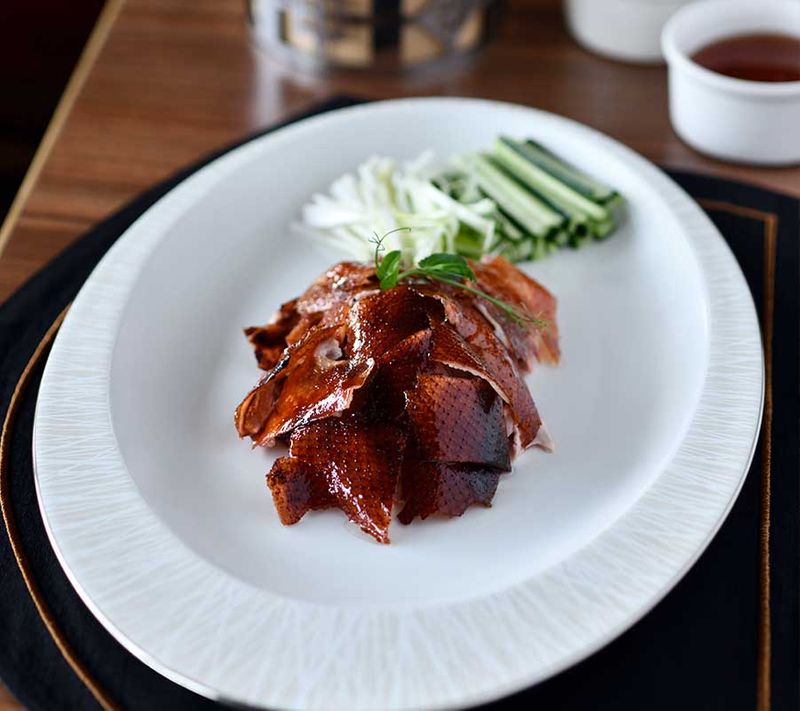
For non-vegetarians, we’d recommend the baked black pepper crabmeat dim sum, an exquisite prawn har gao that is glammed up with gold leaf, and the char siu pork in soft and fluffy bao. Carving stations have also been set up and interactive experiences have been curated at the guest’s table. Beside all the new and innovative dishes, at least 50 per cent of the menu retains the old classics. “In keeping with the legacy of House of Ming and our regular guests who would like to come and order 'without looking at the menu', we have the all-time favourites like golden fried prawns, jumbo prawns with pepper and salt, crispy spinach with almond flakes, lotus stem with dry red chilli, honey chicken, Peking duck and more,” said chef Arun Sundarjan, director of culinary operations.
Raise a toast

Enough thought has been given to the beverage menu. The cocktails, for instance, have been designed keeping in mind the balance between the five elements of nature - wood, fire, earth, metal and water. This is reflected in the smokey Terra Cotta Negroni and the beautiful, floral Butterfly Pea Tea. Then there are mocktails such as the Mandarin Orange that comes with a sprinkle of Sichuan pepper powder in keeping with the essence of the restaurant.

Tea Pairing
A Tea Brewing Cart has also been introduced to provide an authentic tea experience. With 16 varieties of tea on offer, there are different types of teas that can be paired with different courses. While most of us are familiar with the fragrant Jasmine tea, the smokey Lapsang Souchong was a revelation in its smoothness that was akin to a non-alcoholic single malt, and the delicious milk oolong to round up the meal – it pairs well with dessert, or even works as dessert if you know what I mean.
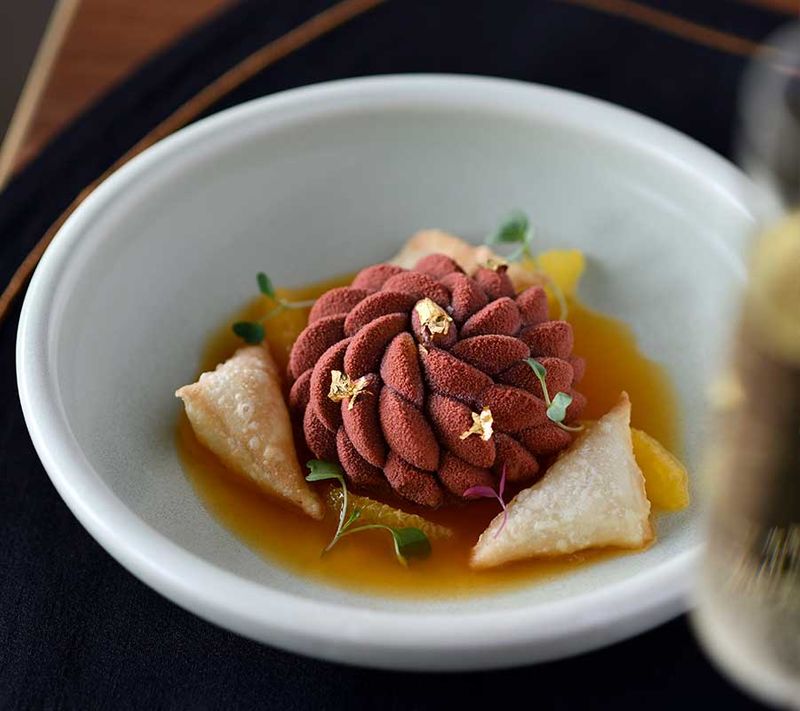
Pro Tip: If you’re feeling particularly indulgent, book one of the two Imperial Rooms. These eight-seater private dining rooms are ideal to sit back and enjoy the leisurely 17-course chef’s tasting menu.


